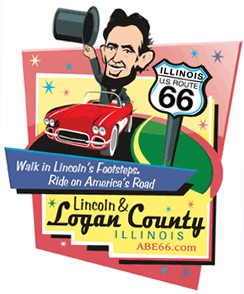 "Clean water and a clean environment are the key to safe
communities, especially after a flood," said Lisa Bonnett, director
of the Illinois EPA. "Our agency is committed to working with our
local government partners to ensure that flood victims get the
assistance they need to recover from this ordeal and that their
water supplies remain protected." "Clean water and a clean environment are the key to safe
communities, especially after a flood," said Lisa Bonnett, director
of the Illinois EPA. "Our agency is committed to working with our
local government partners to ensure that flood victims get the
assistance they need to recover from this ordeal and that their
water supplies remain protected."The Illinois EPA has several
categories of proper flood debris disposal. Any questions about
which materials can be landfilled, burned or recycled will be
answered promptly by calling these numbers: for landfill waste
material, 217-524-3300; open burning waste, 217-782-2113; immediate
emergency, 800-782-7860; outdoor chemical contamination,
217-782-3637.
Drinking water concerns
Be sure to listen to special announcements about local boil
orders that may be in effect. If a local advisory is issued, the
safest route is to drink bottled water or juices. If you must use
water during boil-order conditions, it must be boiled vigorously for
at least five minutes.
Water used to make ice, brush teeth or wash dishes also must be
boiled. Private water wells should be pumped out, allowed to
recharge naturally, disinfected with bleach, and tested before
drinking or cooking.

Your local public health department or the Illinois Department of
Public Health regional office will provide you with information and
assistance in testing your private well. Should special testing of
water supplies for pesticides or other contaminants be necessary,
immediate action will be taken by the Illinois EPA.
Community water supplies already routinely test the potable water
supply for a wide variety of contaminants, including pesticides,
volatile organic chemicals, disinfection byproducts, inorganic
chemicals and coliform bacteria. Should special testing of community
water supplies for other contaminants be necessary, immediate action
will be taken by the Illinois EPA.
Recycling flood waste and sandbags
Uncontaminated sand and sandbags can be recycled for other
household and industrial uses, or they can be used as fill for roads
and holes. Common sense should be used. For example, sand that may
have come into contact with sewage should not be used in children's
sandboxes. Reuses that do not involve direct ongoing human contact,
such as construction uses involving foundation backfilling or pipe
bedding, are acceptable.
Sand that is visually contaminated, such as with oil or fecal
matter, should be disposed of as waste. Visual inspection of the
sand as well as local responder knowledge can be used to assist in
determining if sand has come into contact with floodwaters. When in
doubt, it is generally safer to assume that the sand has come into
contact with floodwaters.
Household appliances, also known as "white goods," can be
recycled by taking them to a local scrap dealer, who will remove
potentially harmful components. For information on scrap dealers in
your area, check the yellow pages or call a local appliance
retailer.
Tires must be disposed of at a registered commercial processing
facility. Units of local government may accumulate used and waste
tires recovered via flood cleanup. It is important to drain standing
water from all used tires collected after flooding and to store them
in a manner that prevents the further accumulation of water. Contact
the Illinois EPA at 217-785-8604 for further information and
possible assistance.
In addition, other recyclable materials should be separated and
recycled, such as glass, metal debris and plastics.

Electronic waste
A new law went into effect at the beginning of 2012 that bans
most electronics items from landfills. Information is available at
http://www.epa.state.il.us/
land/electronic-waste-recycling/index.html. A list of retailers that take
certain electronics is available at
http://epadata.epa.state.il.us/land/eWaste/
crr-list.asp.
Household hazardous flood waste disposal
Household hazardous waste and other chemical products should be
disposed of properly to avoid health and pollution risks. Household
hazardous waste should be placed in plastic bags and left with
traditional household garbage at the curb for normal collection.
Sealed drum and propane tank disposal
Sealed drums, propane tanks and other pressurized gas cylinders
with unknown contents should not be handled by untrained people.
Please notify the Illinois EPA Office of Emergency Response at
217-782-3637 or Illinois Emergency Management Agency at
800-782-7860. To dispose of propane tanks, contact the nearest
propane distributor. Propane tanks have serial numbers that will
allow for identification of tank owners and locations.
Landfilling flood waste
You may dispose of the following items in your local landfill:
lumber, trees, branches, brush, sand, sandbags, plastic sheeting,
shingles, insulation, animal carcasses, grain, animal feed, food,
carpet, furniture, metal debris and machinery.
Appliances cannot be disposed of in landfills, because components
on the appliances that contain Freon, mercury, PCBs and other
hazardous chemical must first be removed by licensed professionals.
Therefore, household appliances must be recycled through a local
scrap dealer.
[to top of second column] |
 Burning flood waste
Tree limbs, brush, natural wood and plant debris can be burned
on-site or at a community site under the supervision of a local
government without a permit. Agricultural waste (bags, cartons, dry
bedding, structural materials and crop residue) can also be burned
on-site without a permit.
Burning clean wood, building debris and lumber does require a
permit from the Illinois EPA. The Open Burning Permit Application
Form can be faxed to 217-524-5023 and is listed on the agency's
website at
http://www.epa.state.il.us/
air/permits/openburn/index.html.
Applicants other than units of government can also apply for
multiple burn locations under a single permit application if the
applicant provides proof along with the application that the
proposed activities have been coordinated with the unit of local
government and the local fire protection district.
The Illinois EPA typically issues these permits within one to two
days after receipt of the application; however, upon request the
agency can expedite permits in the event of an emergency. These
permits are typically issued for a short period (e.g., covering 30
to 90 days), after which time they expire.
General conditions for the open burning of disaster debris:
-
Coordinate the burn with the local fire protection district.
-
Conduct the burn when the wind is blowing away from roadways,
railroad tracks, airfields and populated areas.
-
Provide on-site supervision of the burn location.
-
Burning should occur only from approximately 9 a.m. to 6 p.m. to
get the best natural smoke dispersion conditions.
Burning of asbestos-containing materials and tires is not
allowed under any circumstances.

Call Floyd McKinney at 217-782-2113 for additional information or
to request an expedited permit in the event of an emergency. In the
event that McKinney is not available, a secondary contact in the
event of an emergency is John Blazis at 217-524-0636.
Oil leakage from downed power poles
After storms, electrical transformers on downed power poles have
the potential to leak oil into the environment. Some transformers
still contain polychlorinated biphenyls, which are persistent and
toxic environmental pollutants. If you see downed transformers,
alert local officials who can then contact the appropriate
electrical utility company about disposal or cleanup. If you observe
leaks from a transformer, you may contact an Illinois EPA regional
office during business hours at http://www.epa.state.il.us/land/regions/
or call the Illinois Emergency Management Agency at 800-782-7860 or
217-782-7860.
Since last week, Gov. Pat Quinn has surveyed flooding damage on
the ground and from the air and met with local officials in some of
the hardest hit communities, including Elmhurst, Des Plaines,
Marseilles, Ottawa, River Forest, Bellwood, Riverside, Moline,
Quincy, Bartonville and North Aurora.
In addition to Ogle and Stark counties, the following counties
have been declared state disaster areas: Adams, Brown, Bureau,
Calhoun, Carroll, Cass, Champaign, Cook, DeKalb, Douglas, DuPage,
Fulton, Greene, Grundy, Hancock, Henderson, Henry, Jersey, Jo
Daviess, Kane, Kendall, Knox, Lake, LaSalle, Livingston, Marshall,
Mason, McDonough, McHenry, Mercer, Morgan, Peoria, Pike, Putnam,
Rock Island, Schuyler, Scott, Tazewell, Whiteside, Will, Winnebago
and Woodford.
The state disaster declaration makes available a wide variety of
state resources that can help affected communities respond and
recover from flooding. It came after assessments by emergency
officials and the governor, and begins the process of securing
federal relief.
The governor activated the State Incident Response Center on
Thursday to coordinate the deployment of state personnel and assets
to assist local governments in the affected areas. The state's flood
response is coordinated by the Illinois Emergency Management Agency.
For more information, go to Ready.Illinois.gov.
[Text from
Illinois
Environmental Protection Agency
file received from the
Illinois Office of
Communication and Information]
 |